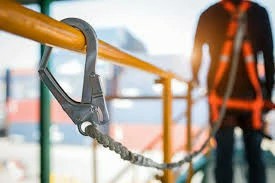


 349,500 Offered Certificates
349,500 Offered Certificates
 24/7 Online Training
24/7 Online Training
 Money Back Guarantee
Money Back Guarantee
 Fully Accredited Courses
Fully Accredited Courses

Created at: 22-02-2025 17:13
When it comes to safety in construction and maintenance, few factors play a more crucial role than weather conditions. Working at heights necessitates not only a sharp awareness of physical surroundings but also an understanding of how weather can drastically affect safety protocols. This blog will dive deep into the risks posed by wind, rain, snow, and extreme temperatures, and emphasize the importance of comprehensive Working at Heights training to mitigate these hazards.
Before heading out for any task at heights, workers and supervisors need to conduct a thorough assessment of not only the task at hand but also the current weather conditions. This awareness can mean the difference between a safe workday and a dangerous situation.
High winds can destabilize scaffolding and platforms, posing a significant threat for those working at heights. Key risks associated with wind include:
Rain can create slippery surfaces, leading to slips and falls. Key considerations include:
Winter weather presents unique challenges for working at heights. Ice and snow can create:
Temperature extremes, whether hot or cold, can also affect worker performance and safety:
For workers to remain safe regardless of weather conditions, implementing best practices is essential. Here are some recommendations:
Proper training can equip workers with the skills necessary to handle various weather challenges effectively:
For those who want to gain essential safety skills, investing in a Working at Heights safety course is a smart choice. Whether you prefer a classroom environment or a Working at Heights online course, there are flexible options to fit your needs.
Weather conditions can significantly impact safety when working at heights, but with the right training and awareness, these risks can be managed effectively. By prioritizing comprehensive Working at Heights Certification Ireland and fostering an environment of safety and preparedness, employers can ensure that their teams are equipped to handle any conditions they might face.
To learn more about how you can take proactive steps towards safety, or to enroll in a Working at Heights Certification Dublin course, visit our training page. For any queries, feel free to reach out at [email protected].